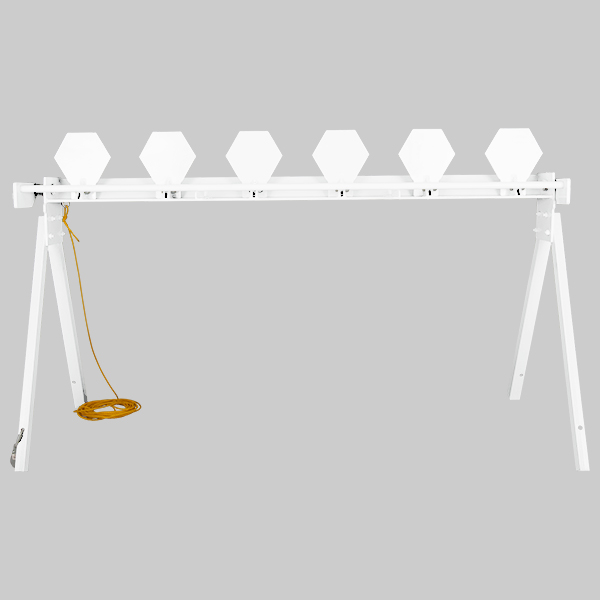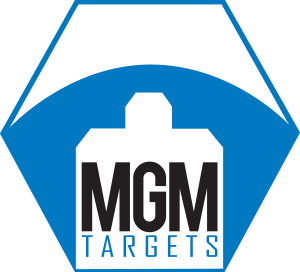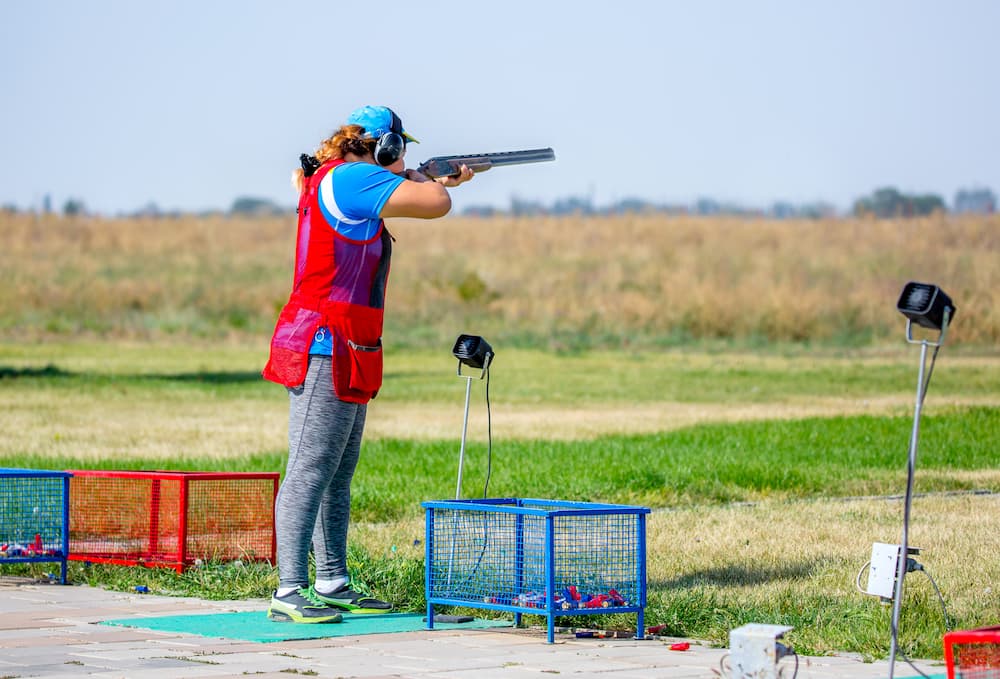Shooting Targets
Target Shooting Tips
What you will learn:
- Firearms training is good for mental and physical fitness
- Quality equipment can mean the difference between an amateur and professional status
- Mastering fundamentals, like the trigger pull and follow-through, will improve accuracy
Whether you are shooting for your hobby, sport, or self-discipline, learning to fire a weapon has measurable benefits to your health and mental well-being. The first and most obvious is not hand-eye coordination but cognitive processing. It has often been said that firing a rifle is 10% ability and 90% mental acuity. Firing a gun means assessing many variables like timing, reading the wind, positioning, and several other factors. Fundamental to the processes integral to firing a weapon, you also need to be in peak physical condition to ensure accuracy.
That being said, many amateurs want to rush the process to becoming experts or to mastering techniques. Still, it’s important to remember that learning to fire a weapon requires time and patience like any other skill. However, that doesn’t mean that there aren’t tips and tricks you can learn along the way to improve. The remainder of this article will focus on six target shooting tips to drastically improve your shooting, but none will lead to rapid-fire gains.
1. Buy Quality Equipment
Many amateur shooters believe that the more money they spend on a quality weapon will result in more accuracy from the line, but that is not necessarily true. While a quality weapon will help, your gun is not the only thing you rely on to improve accuracy and skill. Attachments like scopes, rings, and mounts can also have a drastic effect on your consistency at the range. Therefore, while you want to buy a decent weapon, you also want to focus on spending about the same amount of money on the tools that will increase your accuracy. Quality equipment is essential to maximize your potential.
2. Find Your Firing Position
There are four standard rifle firing positions: standing, kneeling, sitting, and prone. Standing for a rifle shot means that neither arm is supported, meaning stabilizing the barrel is impossible; this is not a position you would use in a competition because it diminishes accuracy.
Kneeling, alternatively, helps increase the stability slightly by bracing one arm on a knee with the hand under the barrel. However, it is still not the most efficient or accurate position for competition or target practice shooting.
Sitting has the potential to be a pretty stable position. Sitting cross-legged allows both of your arms to have a place to brace the rifle, meaning your firing position is supported.
Finally, the prone position allows for the most accuracy. Your body is stretched flat on the ground; the ground supports your arms, and you are in line with your weapon, meaning that mastering the fundamentals of firing — aiming, trigger squeeze, breath control, and follow-through — are easiest in this position. All shooting positions have their advantages, and you should take your time to master each one, working your way up to the most challenging standing.
3. Focus On Your Breathing
Breath control is essential to firing and accuracy. You cannot breathe normally when lining up your shot and taking it because, as you breathe, your entire body continues to move, making it impossible to focus on the target.
Most amateurs realize that holding their breath allows them to steady their shot, but holding your breath for longer than eight to 10 seconds is not ideal. Instead, you want to breathe normally as you pick up your weapon and steady it on your shoulder. When you point your gun at the target, exhale slowly and do not breathe until after the shot is fired. Slowly exhaling, emptying your lungs, allows your body to steady.
Breath control is not natural, and it can feel awkward at first. The key to mastering the technique is to practice, like anything else. With time and patience, you will learn how to exhale correctly, hold your attention on the target, and steady yourself before pulling the trigger, all of which will increase your accuracy exponentially.
4. Practice Your Trigger Pull
When it comes to marksmanship, there are two fundamental skills that every person must learn: site alignment and the dreaded trigger pull. Most competitive shooters are familiar with the advice to pull the trigger to the rear slowly. While this is decent advice, it’s not necessarily the best. Some experts prefer to call it pushing the trigger to the back, implying a more deliberate force.
After you lineup your shot, you want to place the meaty part of your index finger on the trigger. To clarify, the “meaty part” is the area between the end of your finger and your first knuckle. Failing to align your finger correctly can cause a misfire. As you pull the trigger, try only to move your finger at the second knuckle making a 90° angle, this ensures the trigger goes directly back, keeping your shot aligned.
5. Learn To Read the Wind
Wind strength and direction play a critical role in the accuracy of outdoor shooting, and it is vital to consider the wind’s effect when firing at competition shooting targets. While it might seem challenging to calculate the amount of adjustment necessary for firing in a strong breeze or gust, at least three methods can help.
1. Kentucky Windage
Kentucky windage is not about complex calculations or adjustments to the scope. Instead, the shooter aims the rifle to the right or left of the target, horizontally and into the wind. This technique is not the most accurate or most effective because it depends mainly on experience, making it challenging to teach without practical experimentation.
2. Adjustable Sights
Using an adjustable sight means you can maintain focus on the target even as your rifle barrel moves to the left, right, up, or down. To make sight adjustments, you will need a relatively good idea of how fast the wind is moving, meaning you will need an indicator or something to measure wind speed.
3. Flags
Most outdoor ranges have numerous flags planted between the target and the firing line. You can use these flags to calculate the wind’s speed and direction based on the angle and direction of the flag. In the most straightforward situations, you divide the flag tail angle by four to estimate the wind speed. However, the calculations can get more complex depending on your position from the flag.
6. Stay With the Shot
One of the biggest mistakes rookies make is looking at the target after they pull the trigger. It is natural to be curious about how accurate you were, but failing to follow through will ultimately decrease your accuracy. You need to stay with the shot. Do not lift your head to take a gander at the target downrange; remain locked in your position, bringing everything back to the start. You might be amazed at the improvement you see by just remembering to follow through.
MGM Targets Will Help You Make the Shot
How long have you been shooting? If you need any tips and information about competitive shooting, don’t hesitate to contact MGM Targets, offering advice and the best tools for firearms training since 1994. Remember, the technique is only complemented with quality tools.
Featured Image: Vera Larina/Shutterstock


